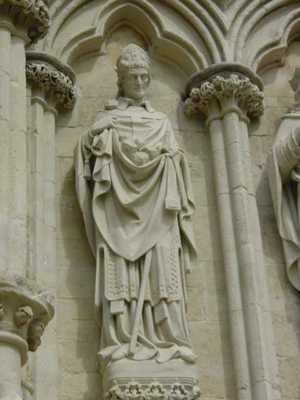One of the most prominent French artists of the 19th Century was a painter by the name of Delacroix. His full name is Ferdinand-Victor-Eugene Delacroix, and he was born in the French city of Charenton-Saint-Maurice on April 26, 1798. He created more than 850 paintings, as well as pastel drawings and murals, before his death on August 13, 1863.
Many historical events were occurring during and around Delacroix’s lifetime. One event that effected the artist and his country was the Greek War of Independence that took place from 1821-1829. Another prominent event was the French Revolution of 1830, which directly inspired Delacroix’s work Liberty Leading the People. The Revolution took place at the end of July 1830, and was an uprising against Charles X.
Delacroix’s work inspired many artists of different art movements. He directly influenced later Impressionists in France. But he is essentially known as a painter of the Romantic style.
Many factors influenced Delacroix’s style in his art. One artist who greatly influenced him was Theodore Gericault. Delacroix met Gericault at Guerin’s, which was a popular French school of art. He was instantly drawn to Gericault’s artistic style and subject matter, and even posed for Gericault’s famous painting The Raft of the Medusa. Another factor that deeply influenced Delacroix was his visit to North Africa and Morocco in 1832. Delacroix loved what he saw in Morocco. The exotic animals, colorful clothing, and Moorish people were to factor in a lot of his work after his visit. Even thirty years after his visit, Delacroix still returned to his memories of Morocco for artistic inspiration.
Although Delacroix used many mediums including pastel, charcoal and etching, he seemed to prefer working with oil on canvas.
The characteristics that make Delacroix’s work recognizable are his brilliant use of color and emotion. His bright, beautiful colors inspired artists around him and still amaze people who see his work today. He also portrays swirling emotion in his works; it’s the emotion of death, agony, love, life or battle. Almost all of his works are teeming with emotion, and so invoke the emotion of his viewers.
One work that shows the artist’s mature style is the famous Death of Sardanapalus, which was an oil on canvas painted in 1826. This was submitted to the prestigious Paris Salon. It is characteristic of Delacroix because the subject is drawn from literature (in the Romantic style). It was inspired by the poet Lord Byron’s work, although Delacroix deviated from Byron’s original tale. It also shows Delacroix’s style because it is bursting with emotion in the dying and agonized figures portrayed. Through its violence and color, it excites the viewer’s emotions and fantasies.
Another work is Tiger Attacking a Horse, a painting Delacroix made sometime between 1825 and 1828. It shows his mature style because, also true to Romantic ideals, it showed an animal pitted against another animal. It also showed the beauty and impressiveness of nature and animals. Again, emotion comes into play, as viewers are faced with the life and death struggle in the painting. Delacroix is also known to have loved large felines such as tigers, lions and leopards, and this painting shows this love. It inspires the imagination because it is set in an unspecified but certainly exotic locale, where tigers and horses both roam free.
A third work that demonstrates Delacroix’s style is Sultan of Morocco, Leaving His Palace at Meknes with his Entourage, an oil on canvas painted in 1845. This painting demonstrates the great influence Morocco had on Delacroix. It also is brilliantly painted in bold and beautiful colors of golds, reds, and browns. This painting illustrates just how Delacroix’s use of color became so widely praised. Again, it is Romantic in its depiction of an exotic and faraway land, as well as African people who would stimulate the imagination. Altogether, although it is a lesser known painting, it is unforgettable because it is detailed and vividly painted.

